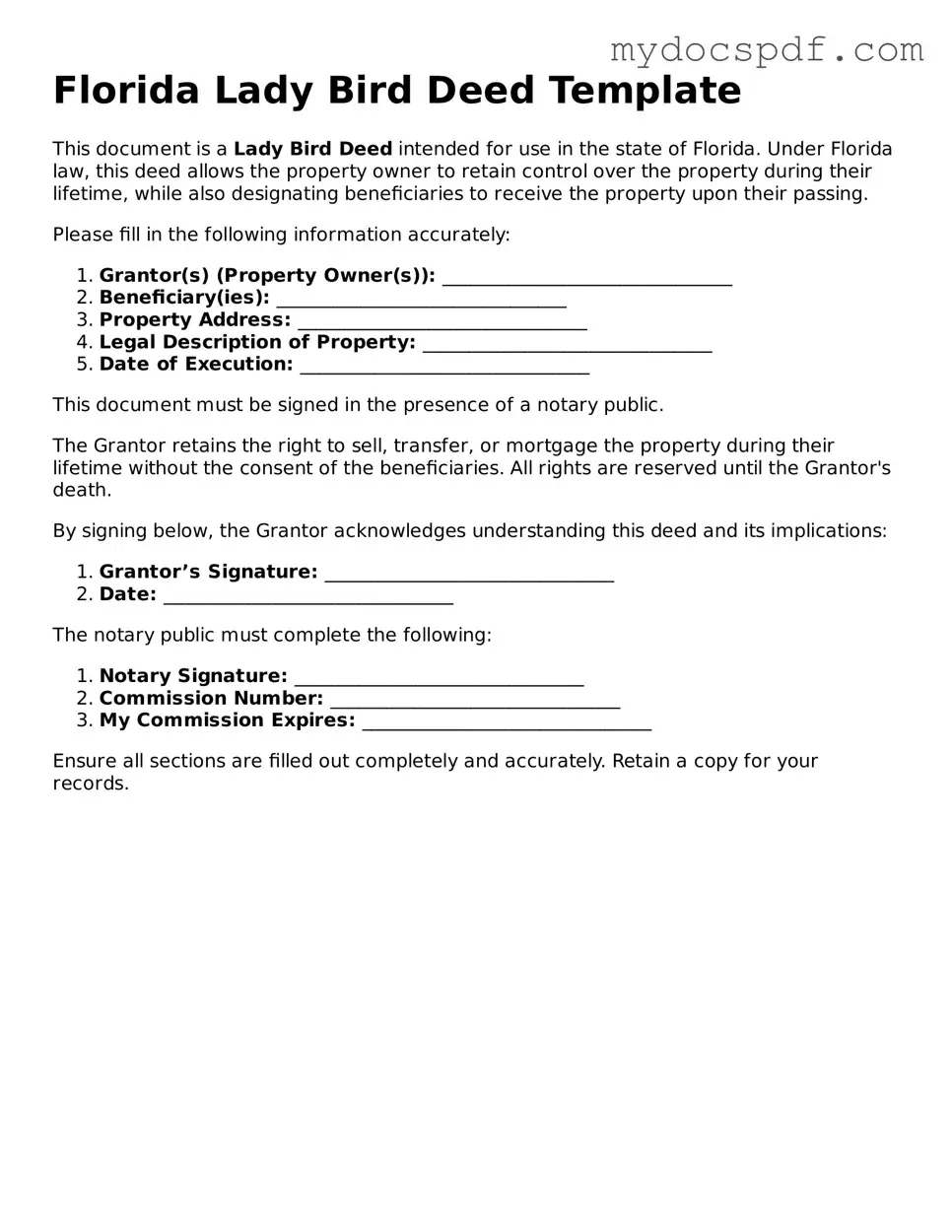Florida Lady Bird Deed Template
This document is a Lady Bird Deed intended for use in the state of Florida. Under Florida law, this deed allows the property owner to retain control over the property during their lifetime, while also designating beneficiaries to receive the property upon their passing.
Please fill in the following information accurately:
- Grantor(s) (Property Owner(s)): _______________________________
- Beneficiary(ies): _______________________________
- Property Address: _______________________________
- Legal Description of Property: _______________________________
- Date of Execution: _______________________________
This document must be signed in the presence of a notary public.
The Grantor retains the right to sell, transfer, or mortgage the property during their lifetime without the consent of the beneficiaries. All rights are reserved until the Grantor's death.
By signing below, the Grantor acknowledges understanding this deed and its implications:
- Grantor’s Signature: _______________________________
- Date: _______________________________
The notary public must complete the following:
- Notary Signature: _______________________________
- Commission Number: _______________________________
- My Commission Expires: _______________________________
Ensure all sections are filled out completely and accurately. Retain a copy for your records.
